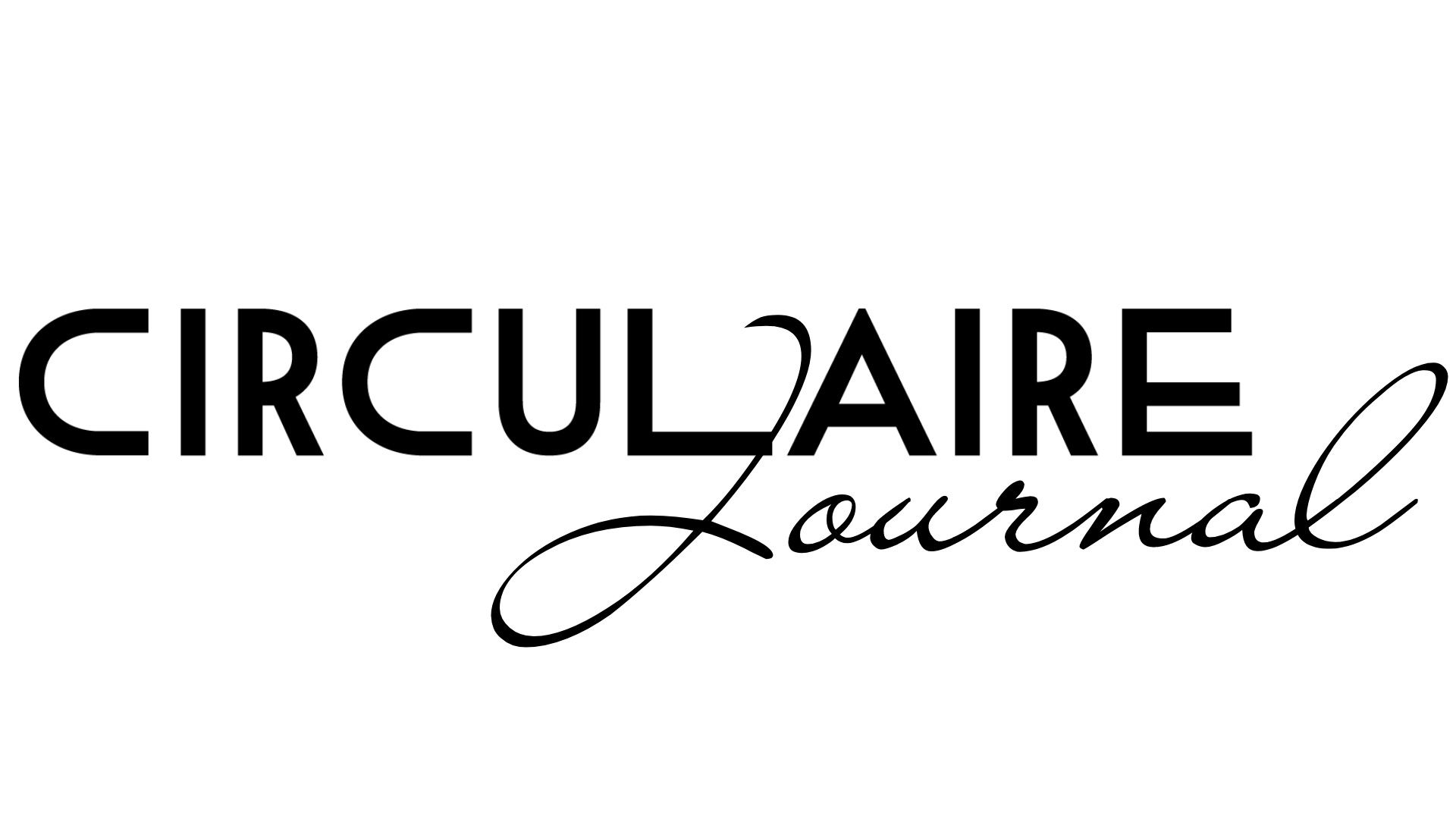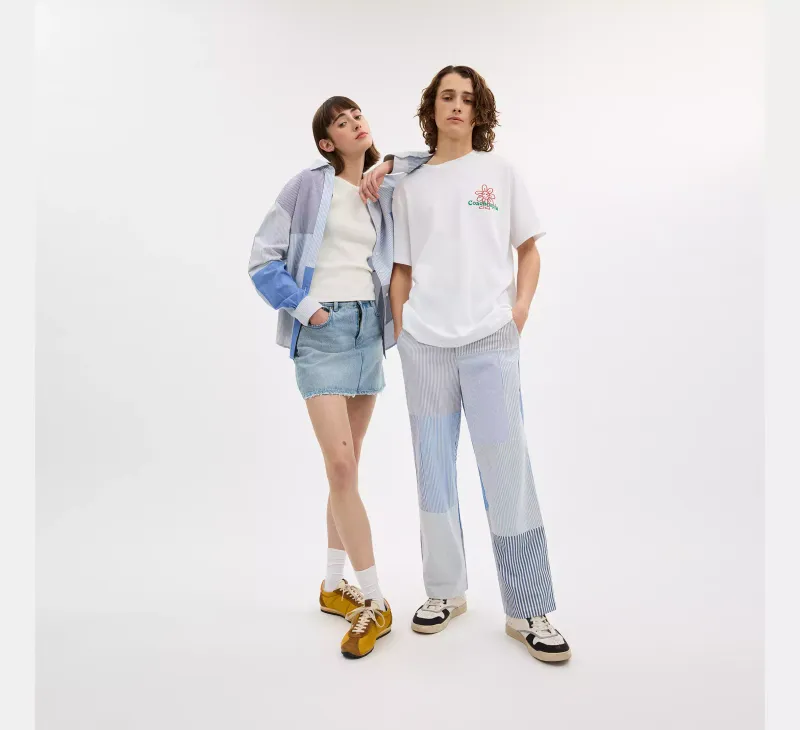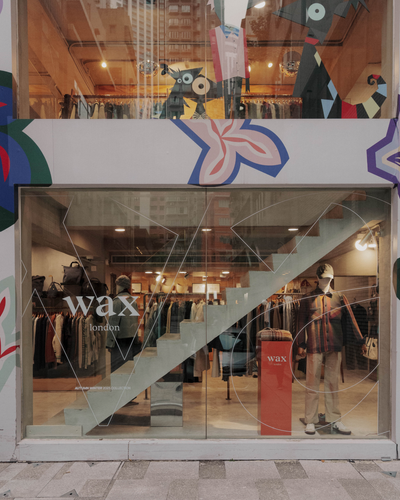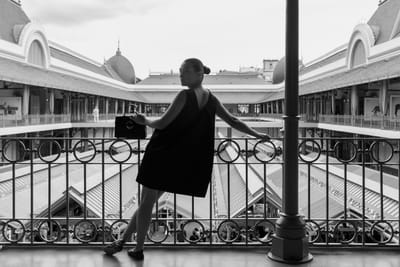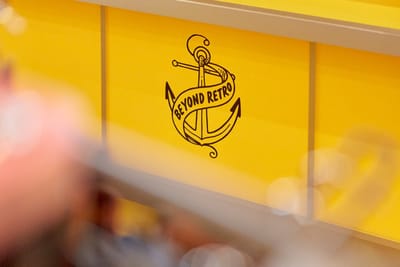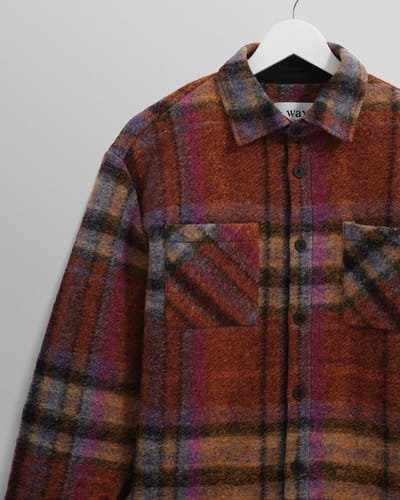In a move that underscores the growing momentum behind circular fashion, Coachtopia has announced a new collaboration with global reuse pioneer Bank & Vogue on a limited-edition capsule collection. Dubbed the Patchwork Edit, the collection breathes new life into discarded garments by transforming them into vibrant, wearable works of art—no two pieces alike.
At the heart of the project lies a creative tension: how to make circularity not just responsible, but desirable. For Steven Bethell, Co-Founder of Bank & Vogue, the vision was clear. “The spark behind the Patchwork Edit was the idea of giving new life to garments that have been discarded,” said Bethell. “We wanted to prove that post-consumer textiles could be transformed into something vibrant, desirable, and unique.”
The limited-edition set features a striped shirt and trousers, meticulously crafted from deconstructed post-consumer garments. Far from being uniform, each piece is constructed from hand-selected panels based on fibre content, colour, and material quality—sorted and sewn together to form new silhouettes. “Because we’re working with unique garments, every final piece is inherently one-of-a-kind,” explained Bethell.
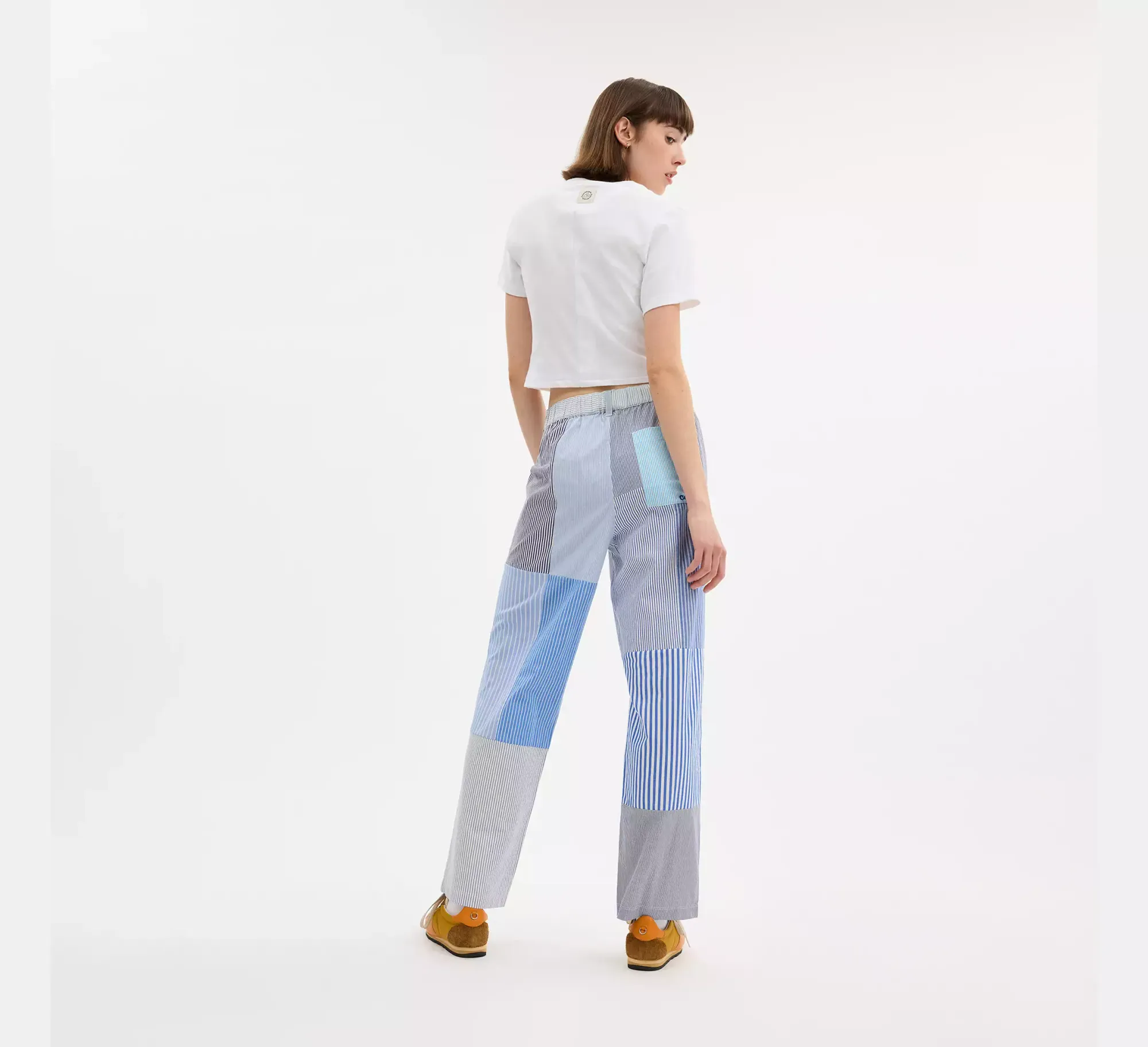
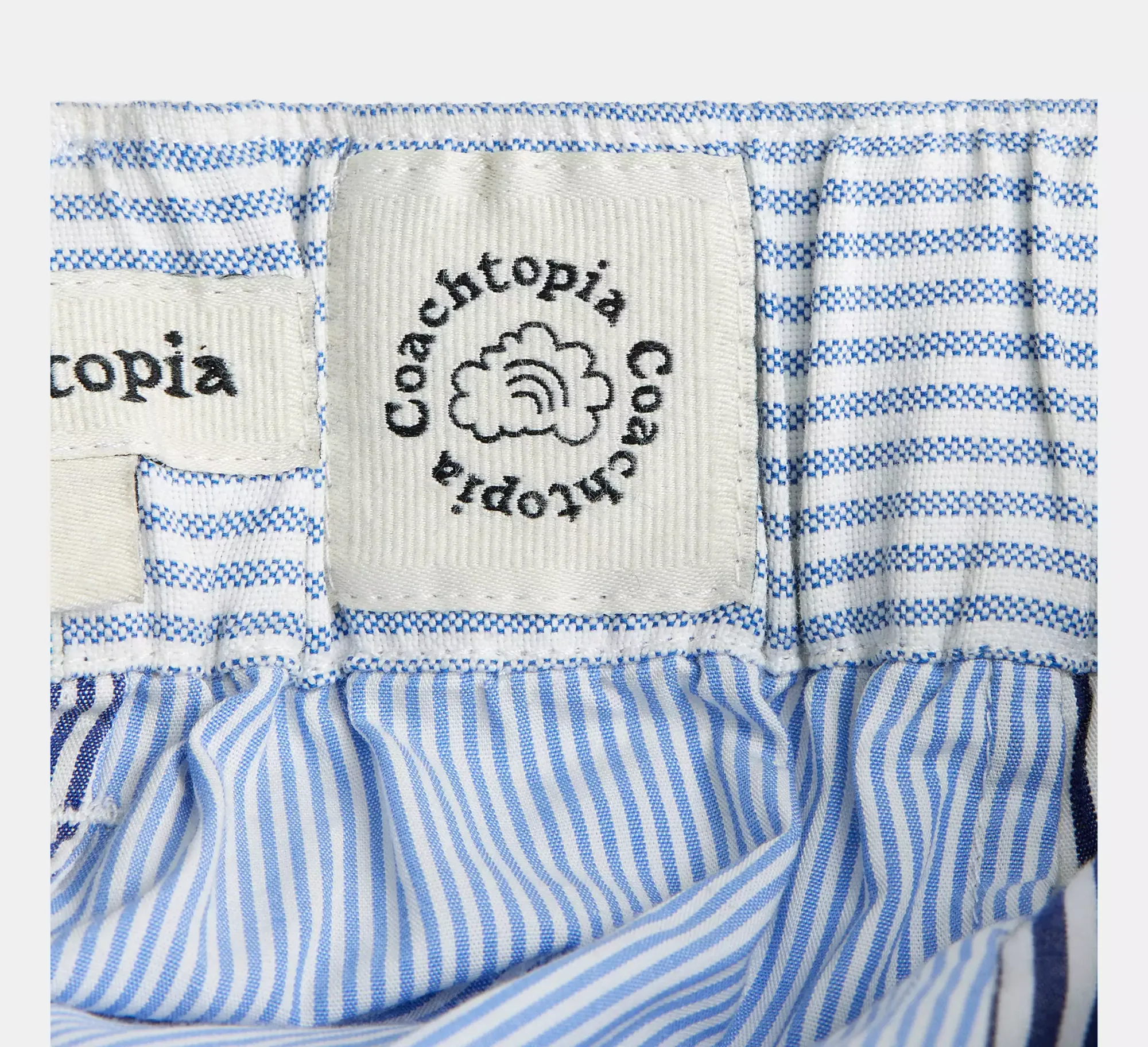
The collaboration reflects a shared ethos between Coachtopia and Bank & Vogue: a commitment to designing out waste and using creativity to reframe the value of existing materials. But while the aesthetic results are eye-catching, the process behind them is just as innovative.
“Our teams worked closely with Coachtopia to align on tolerances for colour variation and panel sizing,” said Bethell. “We developed techniques to standardise inconsistent inputs without erasing their character. We leaned into the diversity of materials as a strength—encouraging designers to think of limitations as prompts for creativity rather than restrictions.”
This philosophy is embedded in Bank & Vogue’s operations, particularly at their remanufacturing facility in Gujarat, India. Purpose-built for circular production, the facility enables transformation at scale by handling large volumes of inconsistent textile inputs and converting them into high-quality outputs. “It turns circularity from a concept into a deliverable reality,” said Bethell, “bridging the gap between used materials and high-end fashion.”
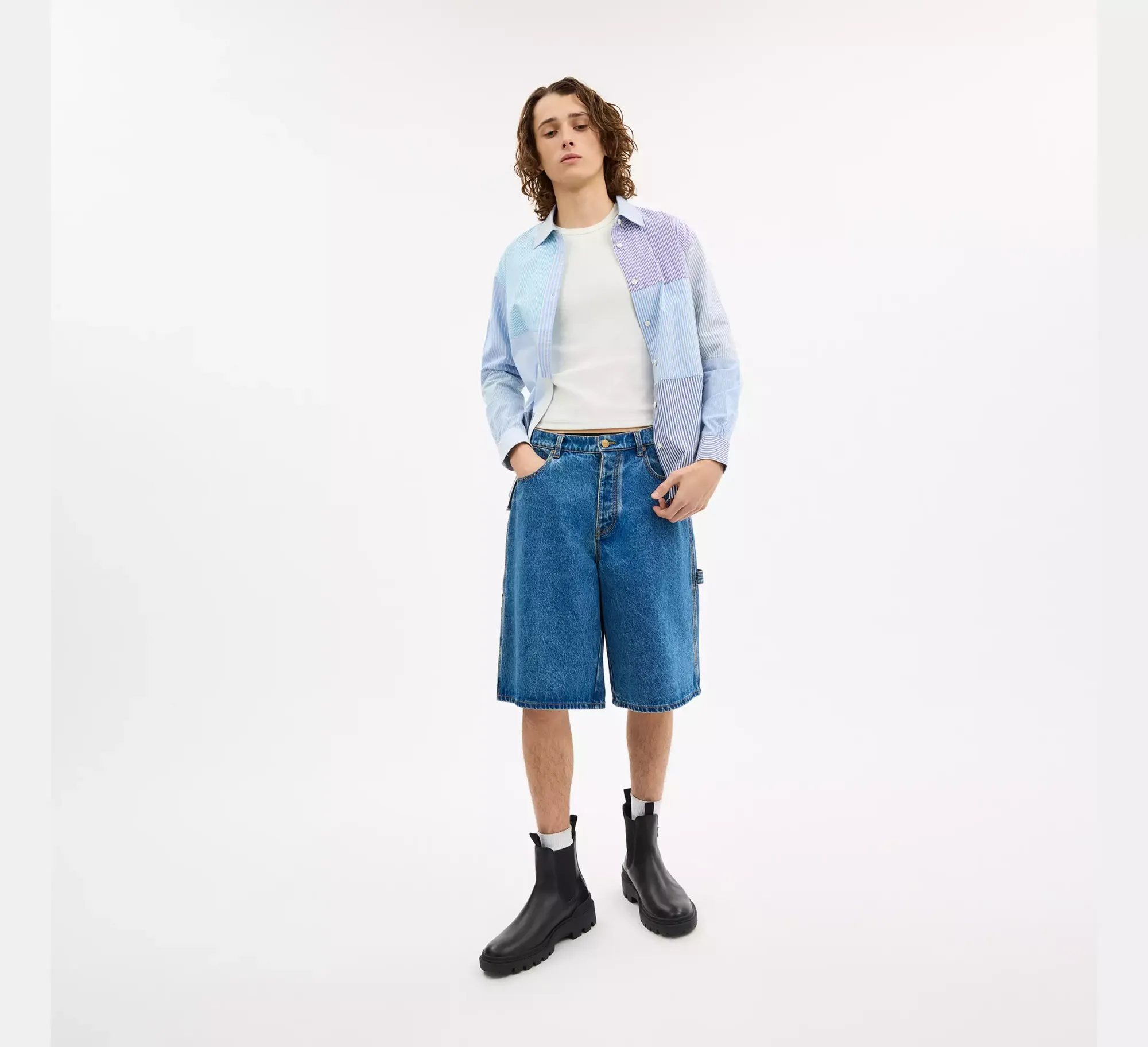
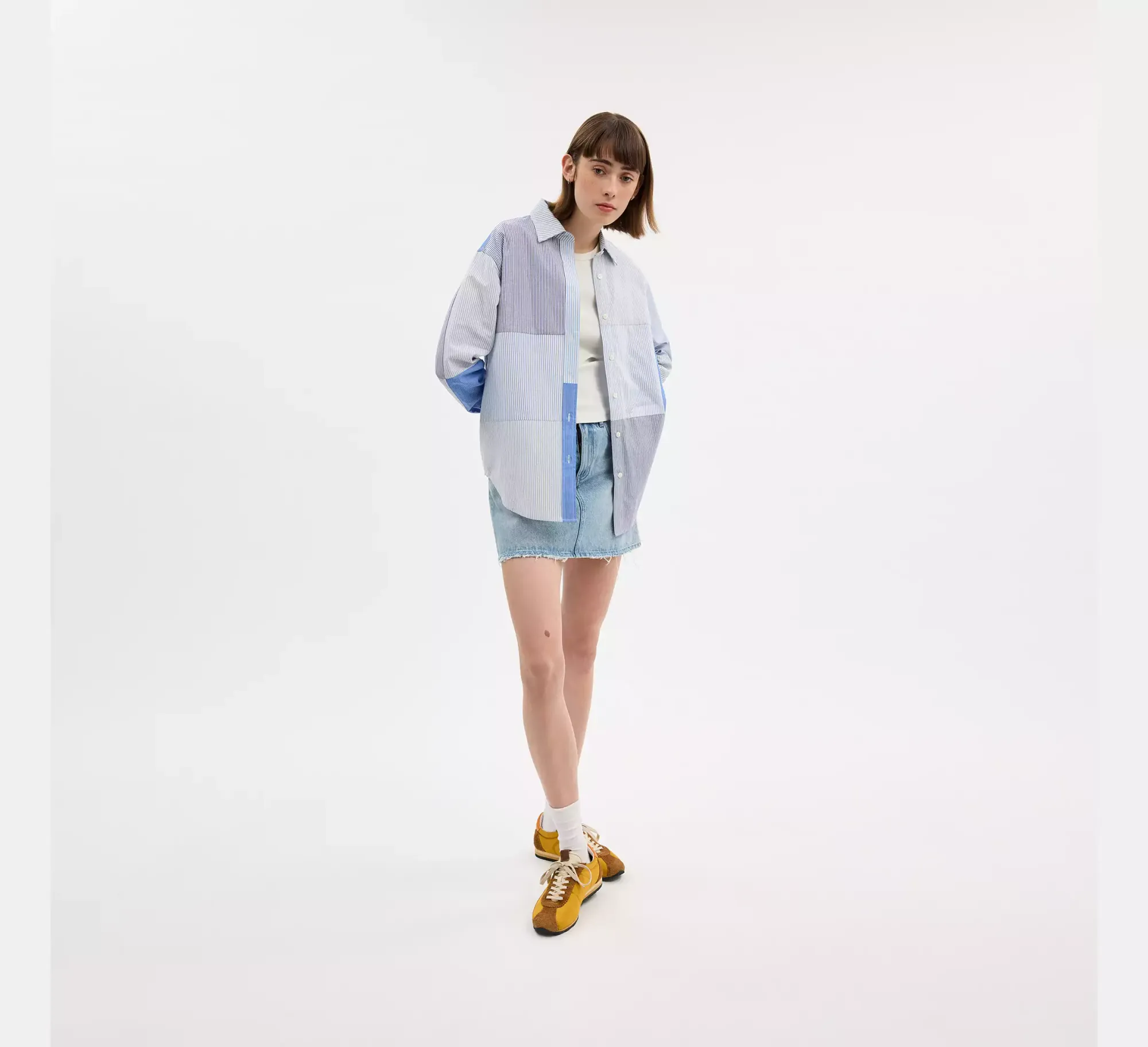
The scale of the facility is vital. As one of the world’s largest traders in pre-loved textiles and the engine behind the Beyond Retro retail chain, Bank & Vogue has honed an end-to-end capability to manage, digitise, and process thousands of garments monthly. For Bethell, infrastructure and collaboration are key. “Scalability in circular fashion depends on infrastructure, partnerships, and consistency,” he noted. “Transparency and strong collaboration with brands like Coach ensure alignment from concept to execution.”
More than a stylish summer statement, the Patchwork Edit is a case study in how circular principles can upend traditional fashion narratives. It’s also a direct response to what Bethell calls the “crisis of stuff”—the relentless cycle of overproduction and waste that defines much of today’s apparel industry. “Collaborations like the Patchwork Edit interrupt that cycle by proving that existing materials still have value,” he said. “By using what already exists, we reduce the need for virgin production and extend the life of textiles that would otherwise end up in landfill.”
Bethell’s experience working in second-hand markets around the globe has shaped his belief in the cultural and economic value of reuse. “In many parts of the world—Africa, South Asia, Latin America—reuse is deeply embedded in the culture,” he said. “We are only doing what our grandmothers have been doing for generations.”
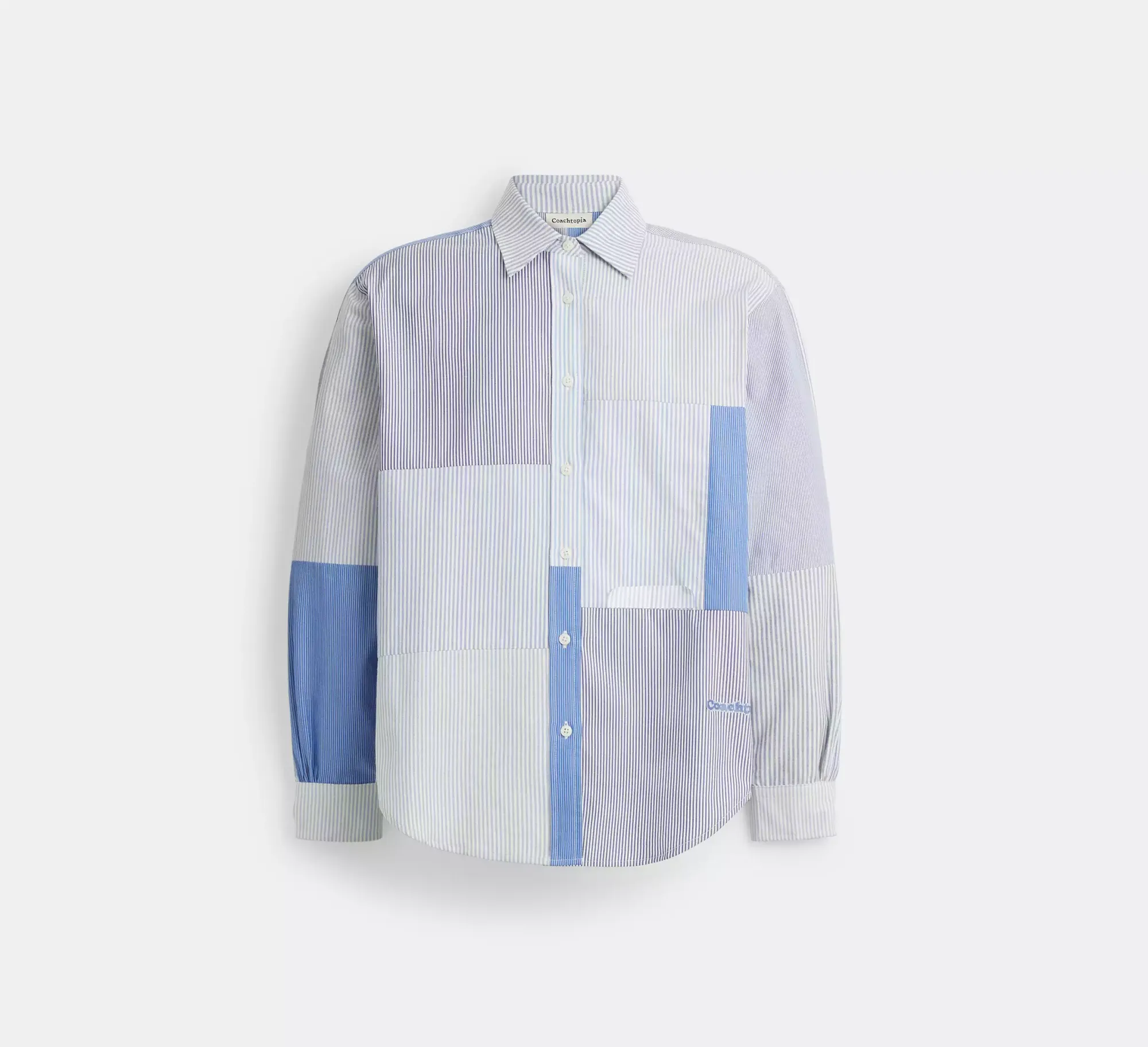
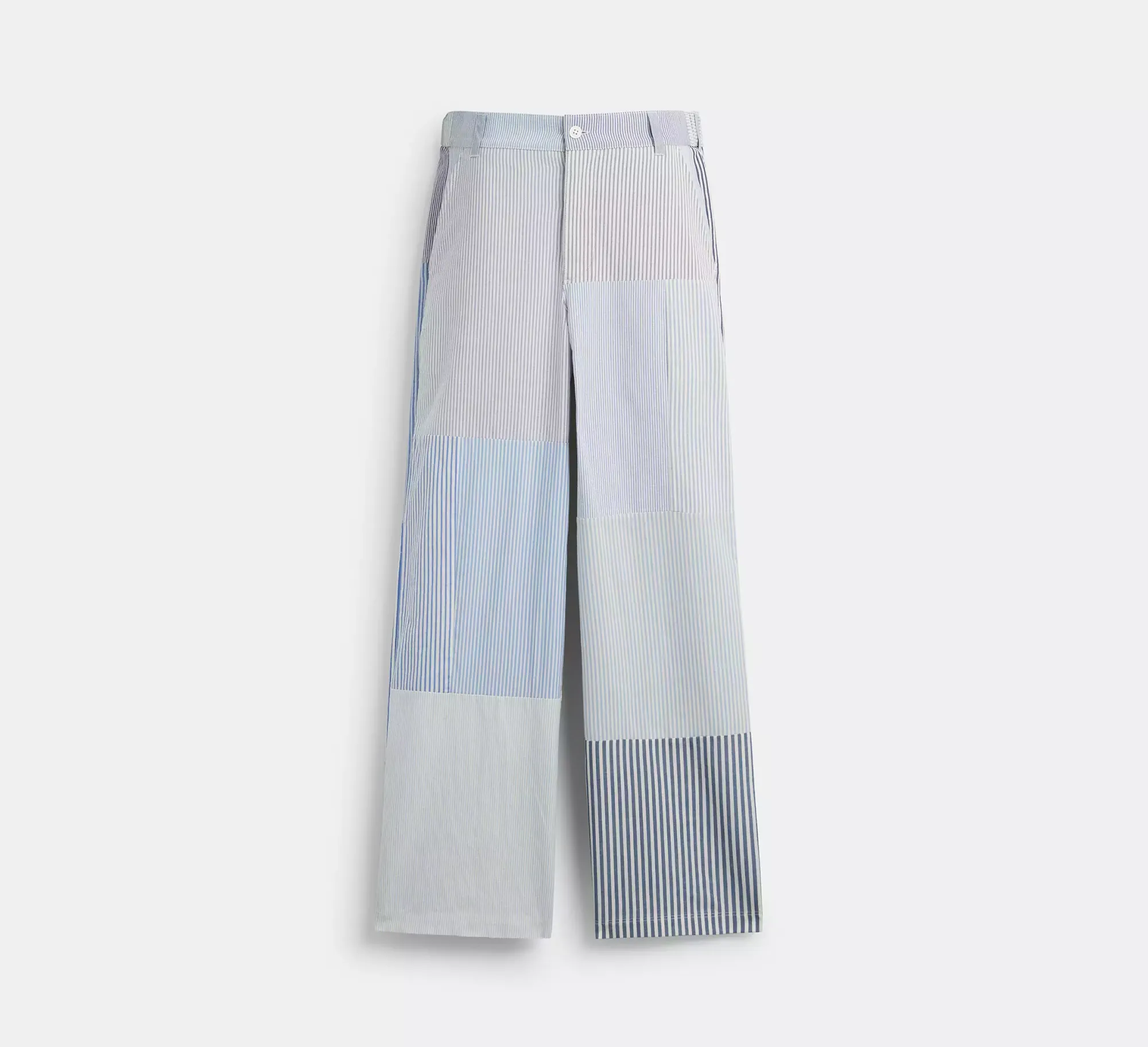
That grounding in global reuse culture informs how Bank & Vogue connects with new audiences—particularly younger consumers. “They’re not just buying a product—they’re buying into a story and a set of values,” said Bethell. “We see this every day in Beyond Retro.”
And what of the future? For Bethell, it lies in embedding circularity at the heart of design. “That’s the future we’re working toward—where sustainability isn’t a constraint but a creative advantage.”
His advice for brands ready to enter the circular space is pragmatic: “Understand your material streams, your capabilities, and your gaps. Partner with organisations that know how to work with used materials and build systems that can support variability. Most importantly, don’t treat circularity as a side project—embed it into your core design and supply chain strategy.”
With the Patchwork Edit, Coachtopia and Bank & Vogue have shown what’s possible when creativity and circularity align—not just in theory, but in practice.
